As far as I'm aware there is not a package that implements triangle ends for colourbars in ggplot2 (but please let me know if there is!). However, we can implement our own. We'd need a constructor for our custom guide and a way to draw it. Most of the stuff is already implemented in guide_colourbar() and methods for their class, so what we need to do is just tag on our own class and expand the guide_gengrob method. The code below should work for vertically oriented colourbars. You'd need to know some stuff about the grid package and gtable package to follow along.
library(ggplot2)
library(gtable)
library(grid)
my_triangle_colourbar <- function(...) {
guide <- guide_colourbar(...)
class(guide) <- c("my_triangle_colourbar", class(guide))
guide
}
guide_gengrob.my_triangle_colourbar <- function(...) {
# First draw normal colourbar
guide <- NextMethod()
# Extract bar / colours
is_bar <- grep("^bar$", guide$layout$name)
bar <- guide$grobs[[is_bar]]
extremes <- c(bar$raster[1], bar$raster[length(bar$raster)])
# Extract size
width <- guide$widths[guide$layout$l[is_bar]]
height <- guide$heights[guide$layout$t[is_bar]]
short <- min(convertUnit(width, "cm", valueOnly = TRUE),
convertUnit(height, "cm", valueOnly = TRUE))
# Make space for triangles
guide <- gtable_add_rows(guide, unit(short, "cm"),
guide$layout$t[is_bar] - 1)
guide <- gtable_add_rows(guide, unit(short, "cm"),
guide$layout$t[is_bar])
# Draw triangles
top <- polygonGrob(
x = unit(c(0, 0.5, 1), "npc"),
y = unit(c(0, 1, 0), "npc"),
gp = gpar(fill = extremes[1], col = NA)
)
bottom <- polygonGrob(
x = unit(c(0, 0.5, 1), "npc"),
y = unit(c(1, 0, 1), "npc"),
gp = gpar(fill = extremes[2], col = NA)
)
# Add triangles to guide
guide <- gtable_add_grob(
guide, top,
t = guide$layout$t[is_bar] - 1,
l = guide$layout$l[is_bar]
)
guide <- gtable_add_grob(
guide, bottom,
t = guide$layout$t[is_bar] + 1,
l = guide$layout$l[is_bar]
)
return(guide)
}
You can then use your custom guide as the guide argument in a scale.
g <- ggplot(mtcars, aes(mpg, wt)) +
geom_point(aes(colour = drat))
g + scale_colour_viridis_c(
limits = c(3, 4), oob = scales::oob_squish,
guide = my_triangle_colourbar()
)

There isn't really a natural way to colour out-of-bounds values differently, but you can make very small slices near the extremes a different colour.
g + scale_colour_gradientn(
colours = c("red", scales::viridis_pal()(255), "hotpink"),
limits = c(3, 4), oob = scales::oob_squish,
guide = my_triangle_colourbar()
)

Created on 2021-07-19 by the reprex package (v1.0.0)



